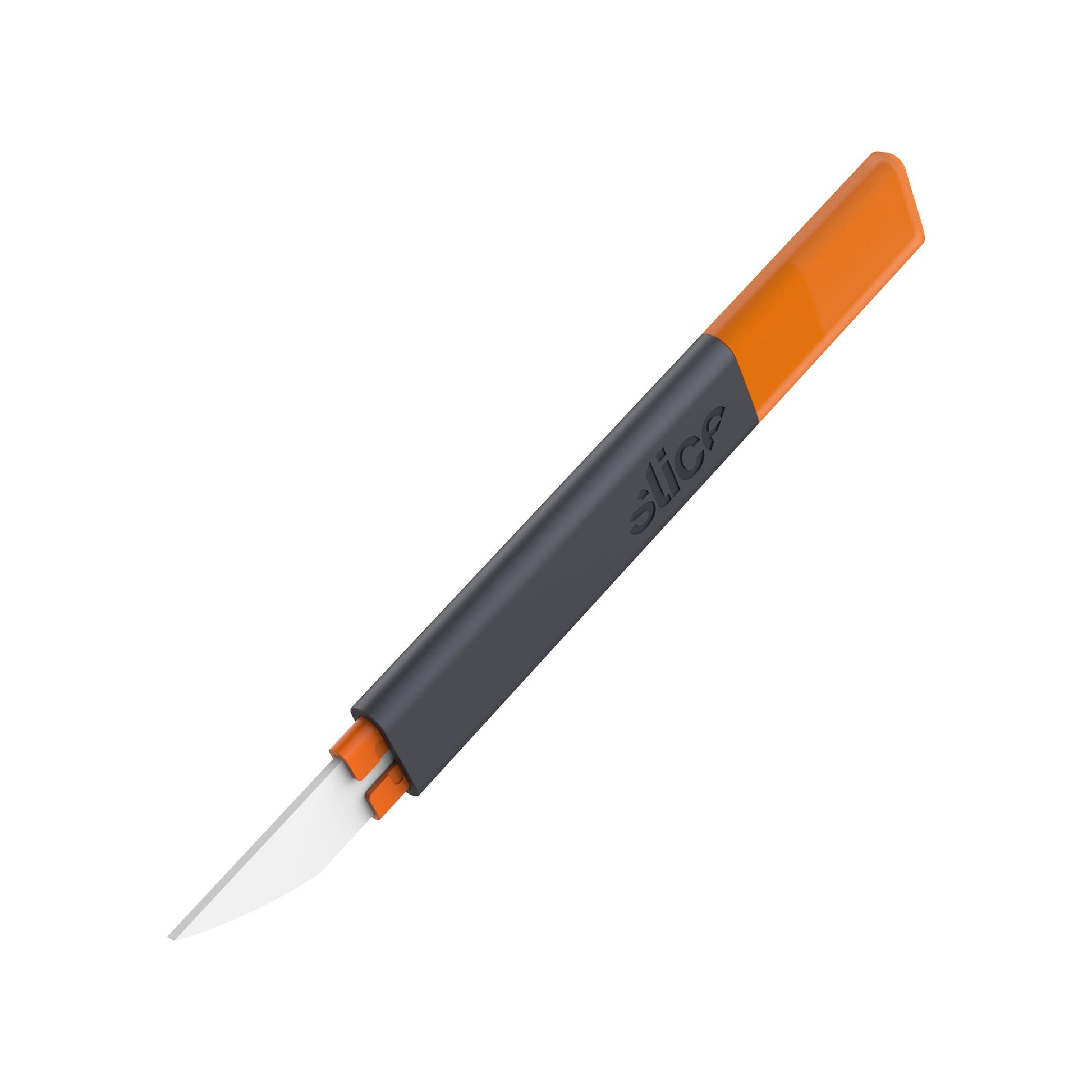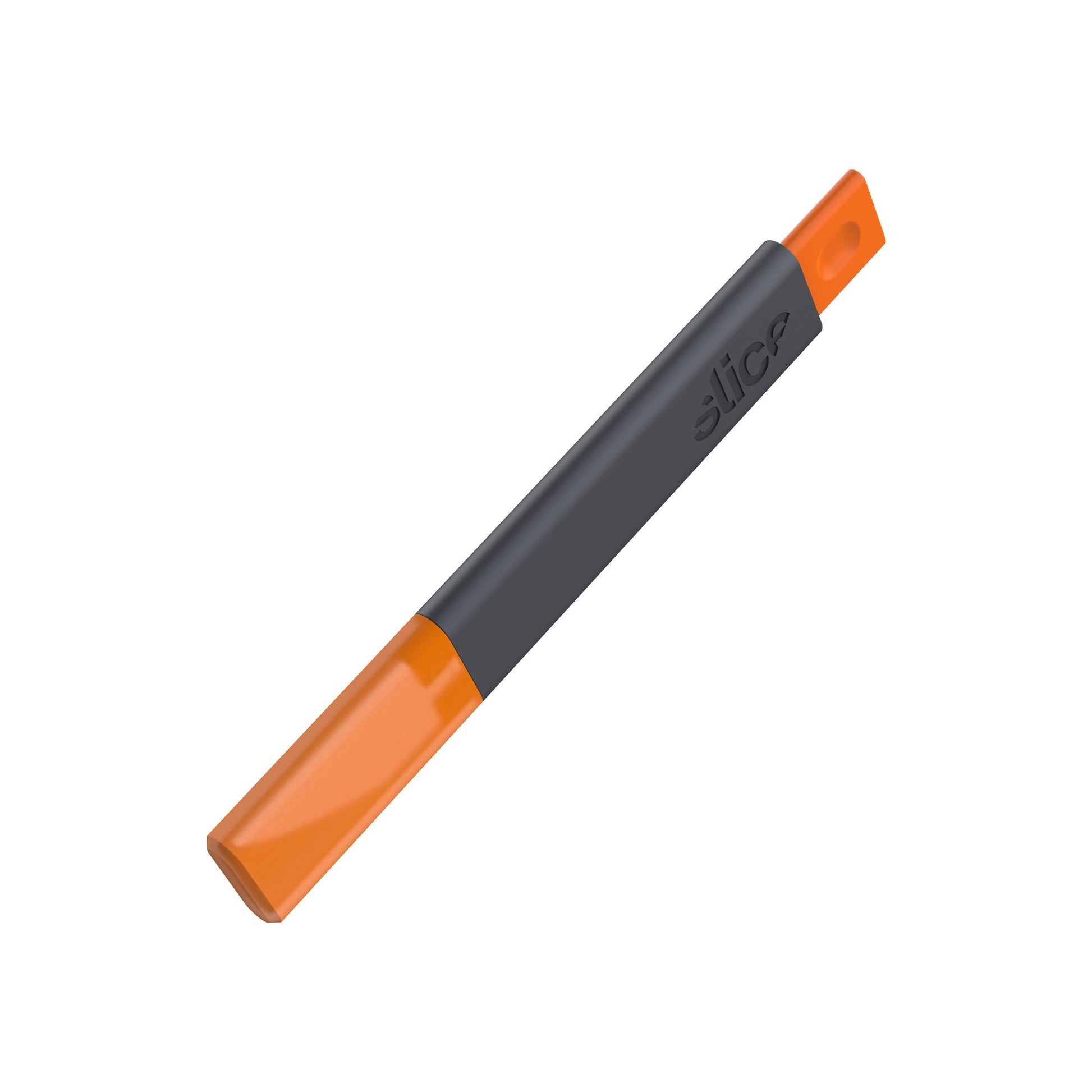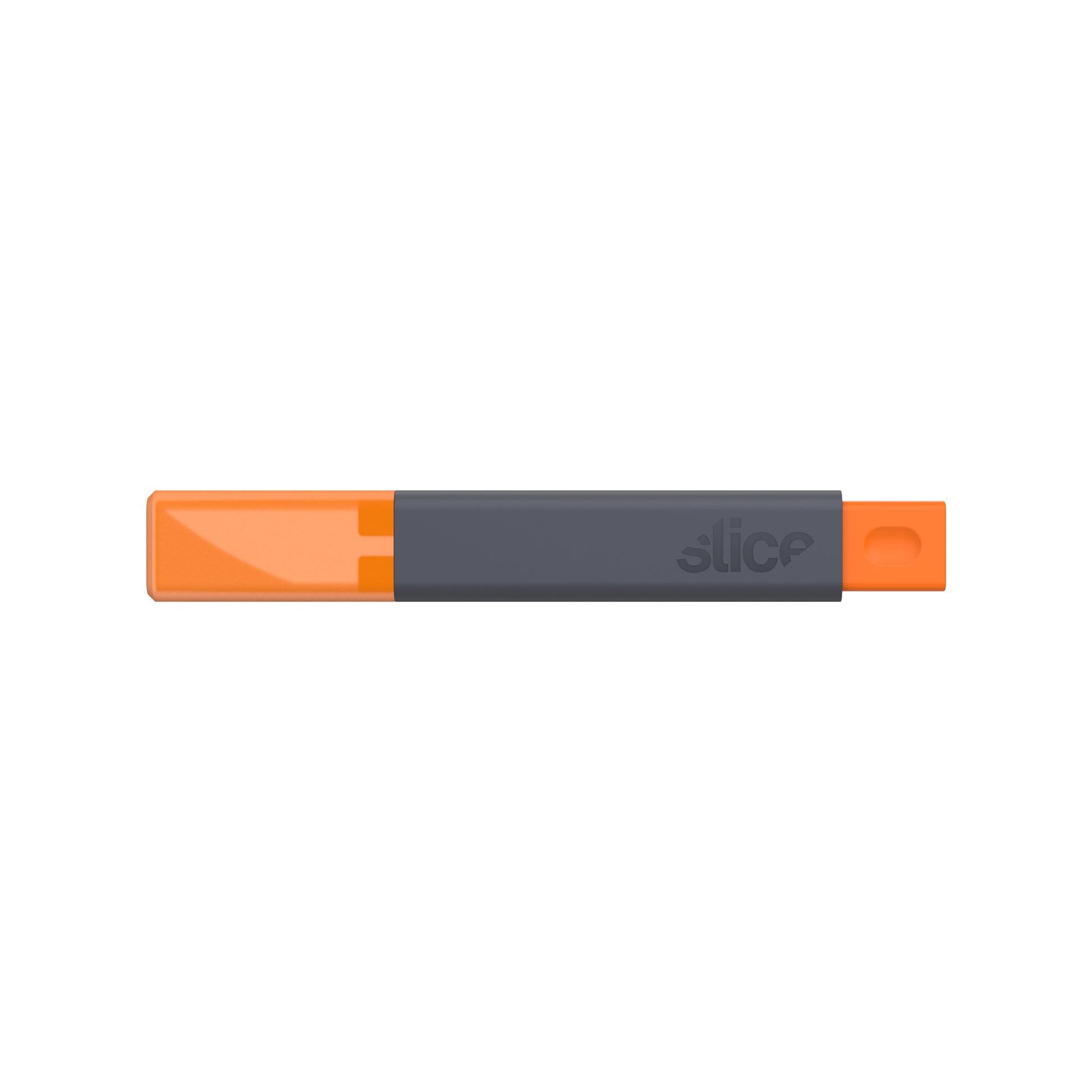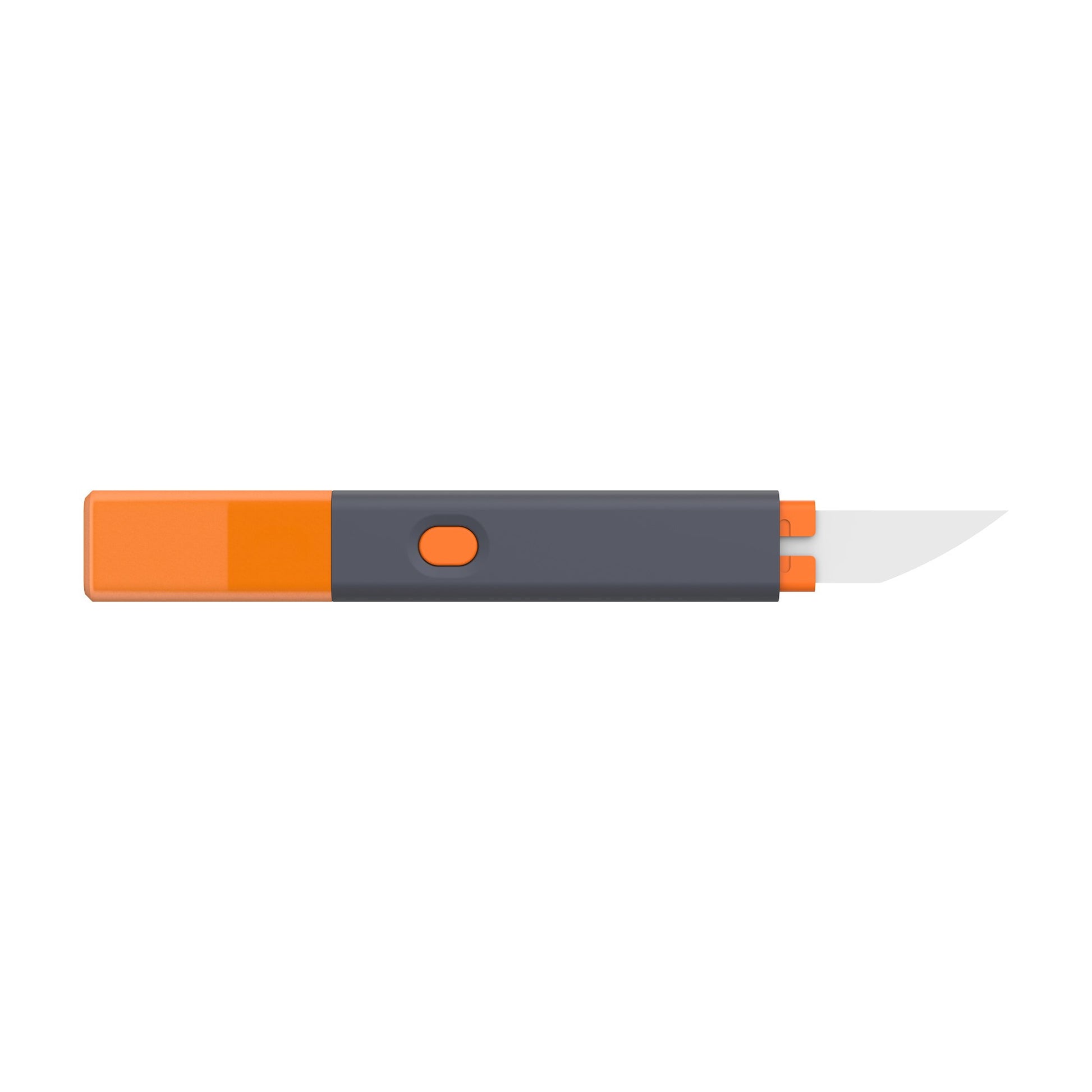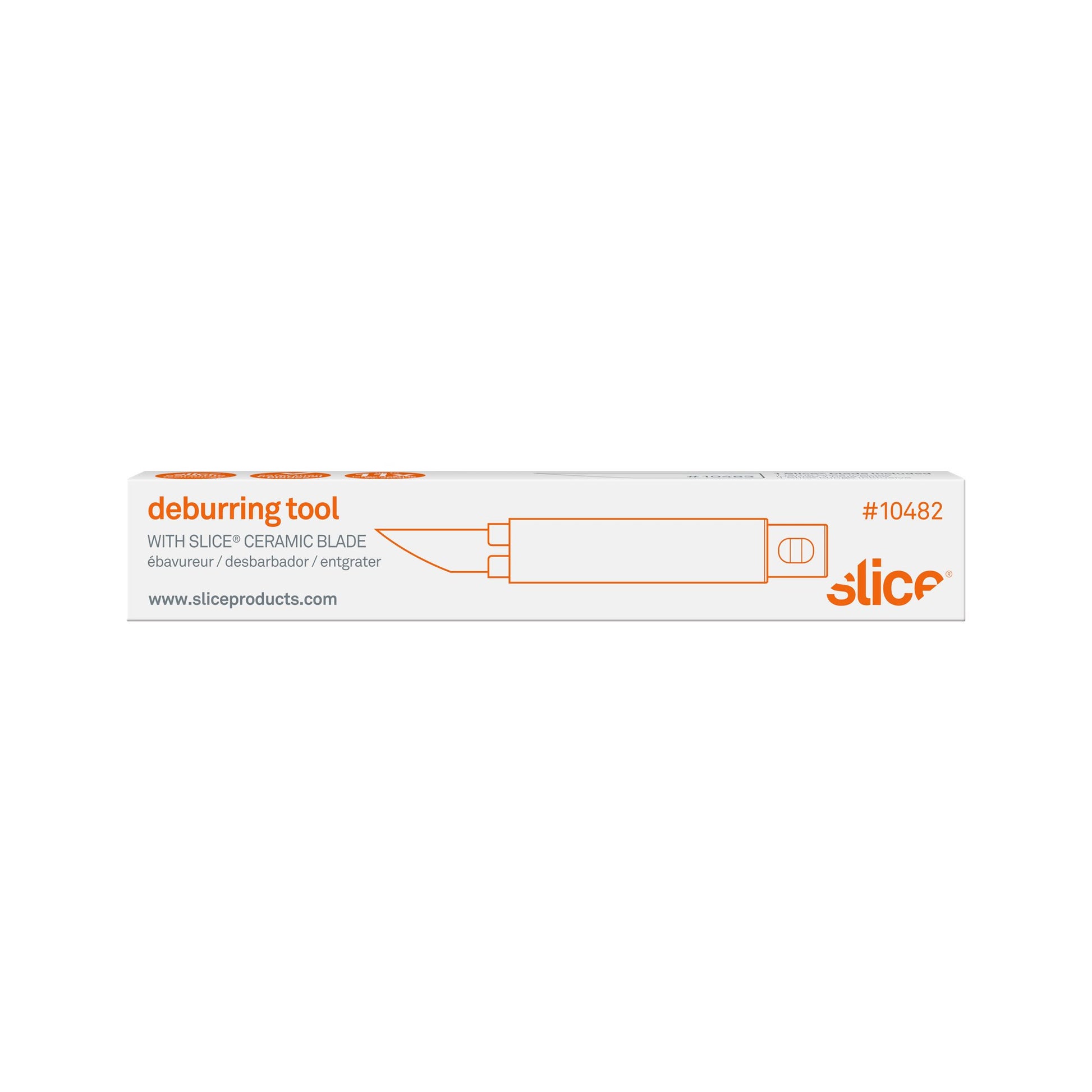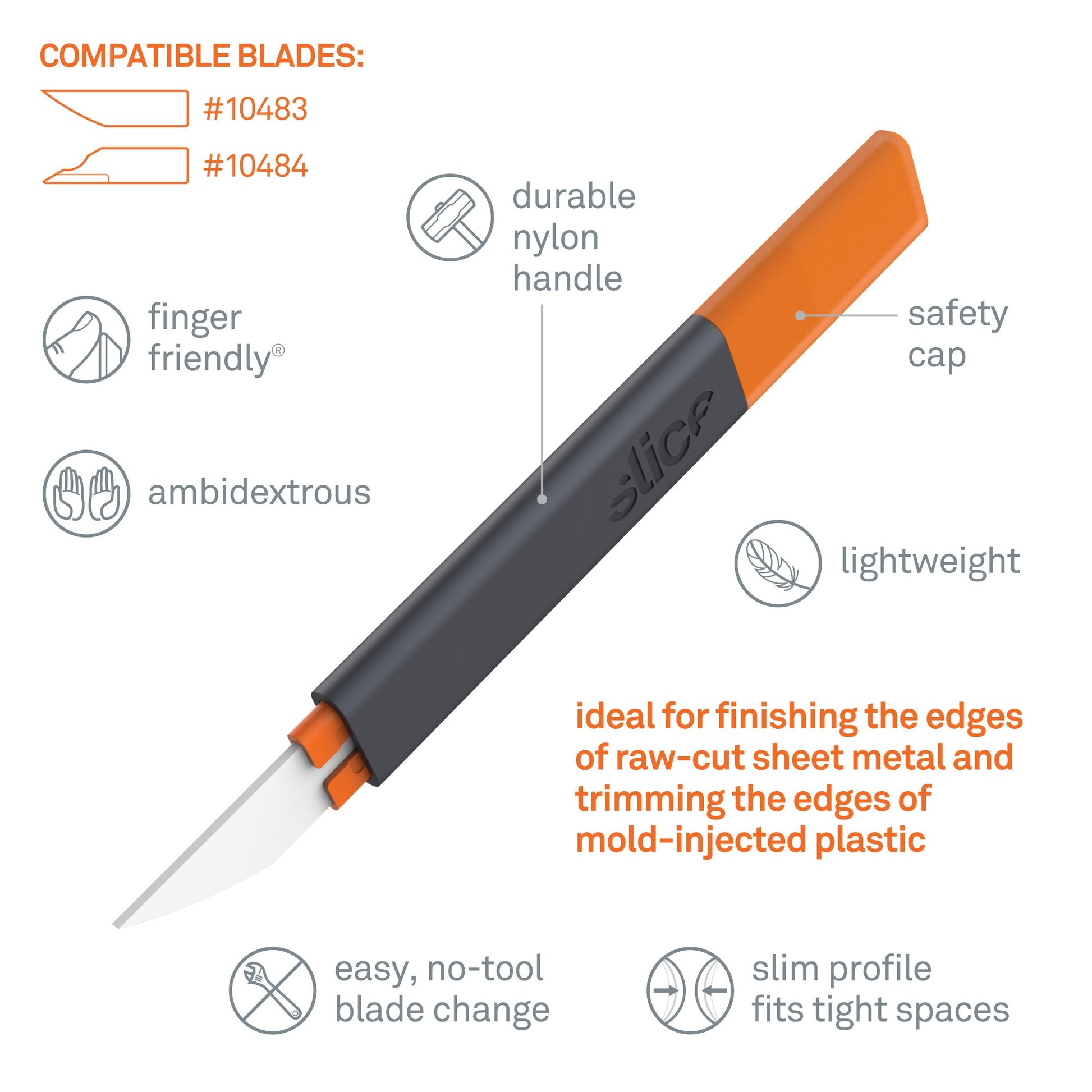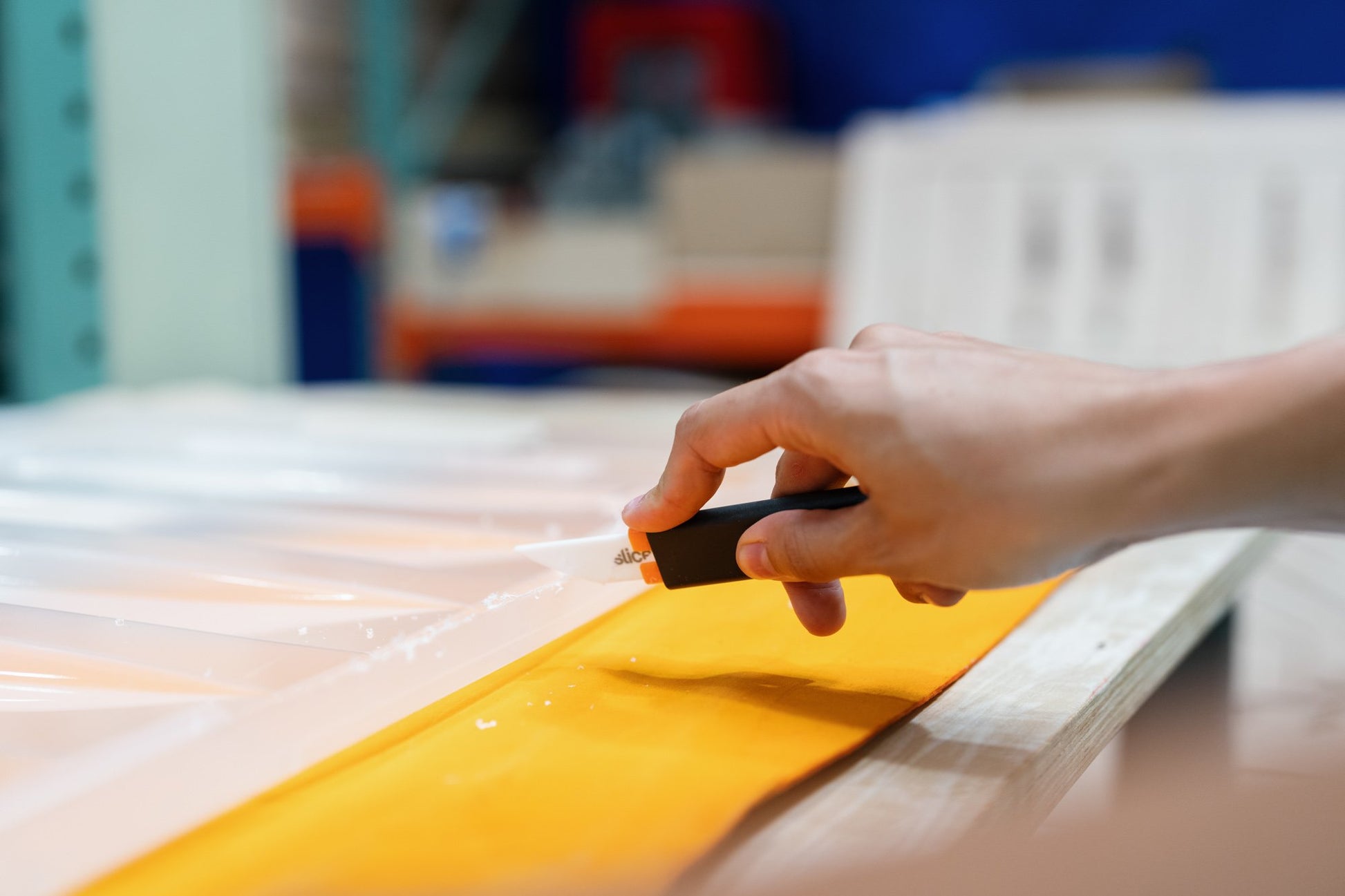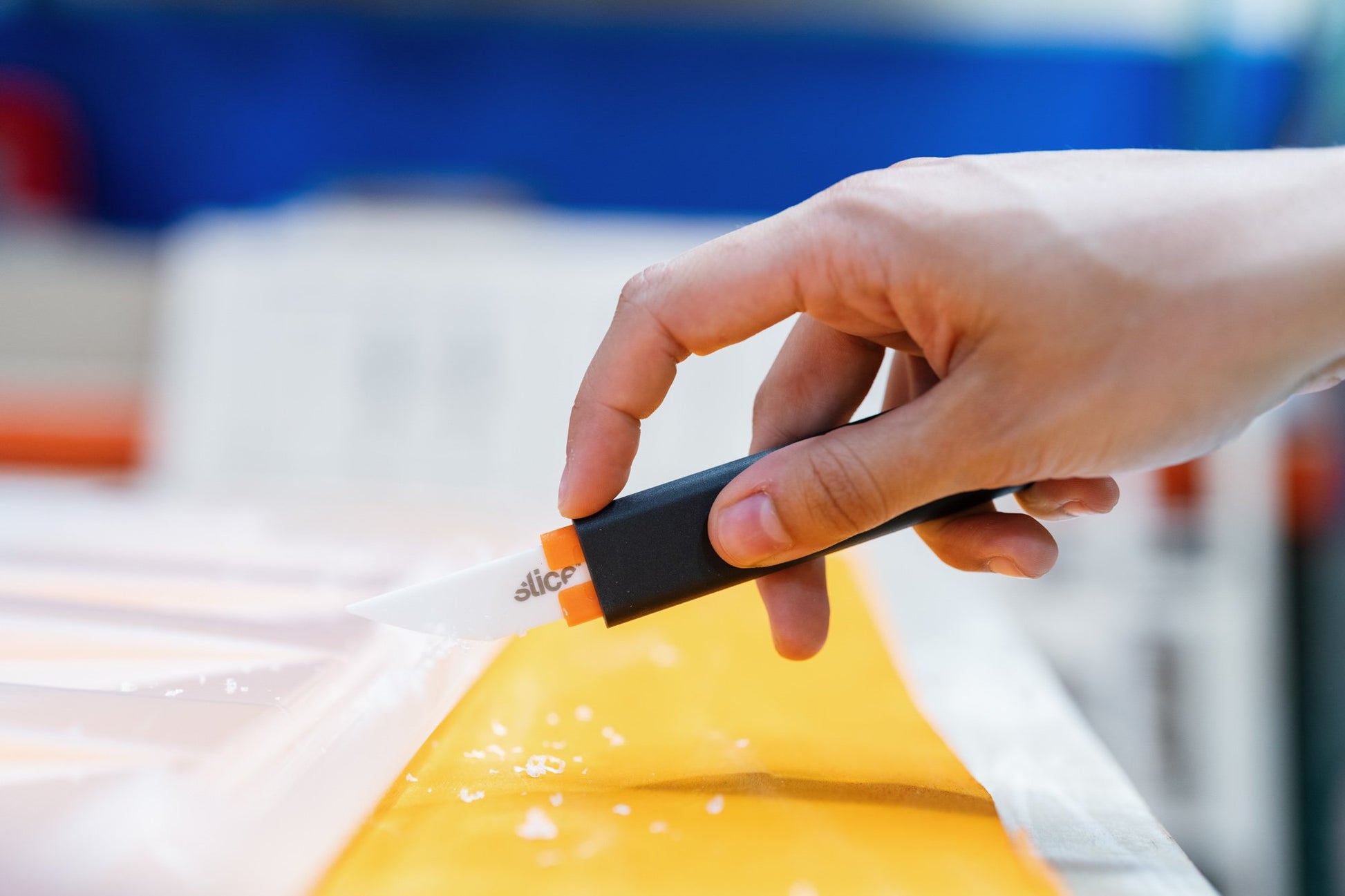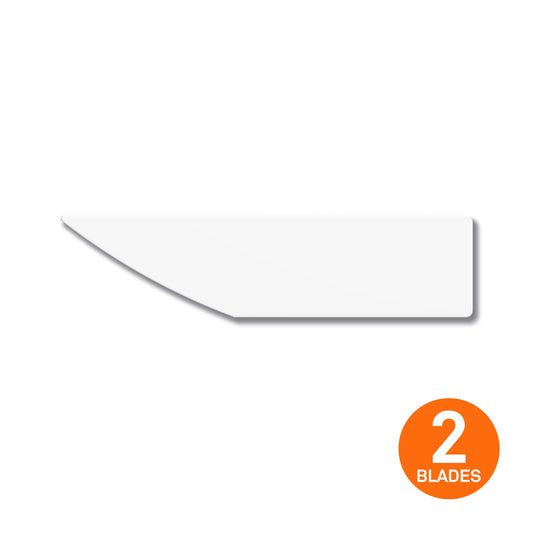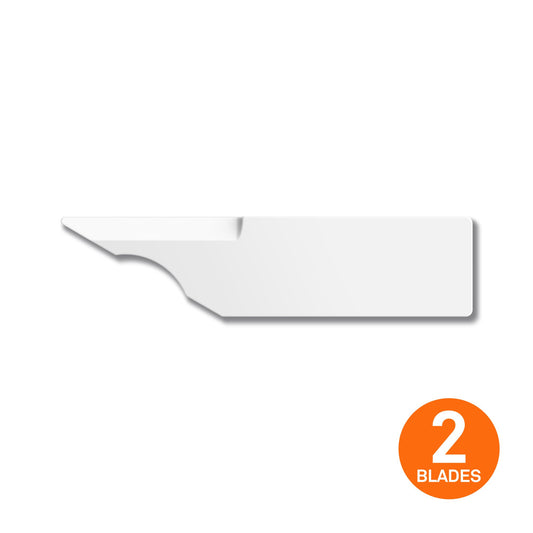バリ取りツール
SKU #10482
Slice® 10482 バリ取りツールは、頑丈で、耐久性の高いバリ取りツールが欲しいというお客様のご要望に応えるツールです。バリ取りを目的としたこのツールは、とりわけ工場や作業現場でお使いいただけるようにデザインされ、板金エッジや射出成形したプラスチック、3Dプリンターで製作したプロトタイプのバリ取りに適しています。
10482 バリ取りツールには、10483 バリ取り刃(凸面)が付属していますが、オプションとして10484 バリ取り刃(凹面)もご使用いただけます。いずれの刃も、様々な角度からバリ取りツールで作業いただいたときに、多様な面に対応できるようになっています。耐久性の高いグラスファイバー強化ナイロン製の持ち手には、替刃1枚を入れておくことができる便利なストレージがあり、すぐに刃を交換することもできます。10482 バリ取りツールの持ち手は、窮屈な角度で届きにくい部分でもお使いいただけるよう、スリムな形状をしています。
Slice社のバリ取り刃は、鋼よりも硬い素材である酸化ジルコニウム(100%)製で、先進のセラミックの硬度をフルに生かせるよう厚みを持たせたデザインになっています。また、Slice社のセラミック刃は、非発火性、非磁性、非電導性で錆びることがありません。刃の交換には工具も不要です。
- 付属している刃の種類:10483 バリ取り刃(凸面)
- 耐久性の高いグラスファイバー強化ナイロン製持ち手(安全キャップ付き)
- 左右両利きに対応するデザイン
- 持ち手に替刃をストックできる
- 厚みのある刃で効果的にバリ取りできる
- 非発火性、非電導性、非磁性の刃
- 化学的不活性の刃、錆びない
- オイルや潤滑油が不要な刃
- 酸化ジルコニウム(100%)製の刃
- 適合する替刃:10483、10484
- 刃の交換に工具不要
- SKU #10482
Great for:
- Finishing the edges of raw-cut sheet metal
- Trimming the edges of mold-injected plastic
- Smoothing edges from 3D printing
- Working with clay in art projects
Product Specifications
Product Specifications
Cutting Depth:
Material: GFN, POM, PP, zirconium oxide
Dimensions: L x W x H
Weight: 0.08 lb







Compatible Products
FAQ
What Is a Deburring Tool?
A deburring tool is used to remove excess edge material, or burrs, from the raw version of a product. This process creates a finished object from a rough cut so it can work as intended. It also significantly adds to the safety of the finished object, since it removes jagged edges that could cut someone or catch and pull fabric, including clothing. Deburring is a vital process for manufacturing many different goods made from a host of different materials. Use cases include:
- Finishing the edges of raw-cut sheet metal
- Trimming the edges of mold-injected plastic
- Removing excess strings of polymer left on a 3D-printed object
- Smoothing the edges of machine components so they’ll fit together properly once assembled
How Does a Deburring Tool Work?
Deburring tools all do the same thing, whether they’re automated or handheld, and regardless of which method is used (thermal deburring, tumbling, vibrating, grinding, or filing). They remove unwanted material from an object, specifically at its edges, in order to create a smooth finish. Typically, the removal happens by creating friction in order to chip or sand off burrs. For very small objects, it’s often enough to tumble or vibrate them in a machine, sometimes with the aid of a wet or gritty medium.
The tool offered by Slice is designed as a hand tool for a more custom approach. Like many other deburring devices, it relies on friction. The user essentially scrapes away at a rough edge, removing burrs and smoothing the finish. While sanding, which is a similar process, removes excess material on a flat plane, handheld tools for deburring allow a great deal of precision and maneuverability.
The tool offered by Slice is designed as a hand tool for a more custom approach. Like many other deburring devices, it relies on friction. The user essentially scrapes away at a rough edge, removing burrs and smoothing the finish. While sanding, which is a similar process, removes excess material on a flat plane, handheld tools for deburring allow a great deal of precision and maneuverability.
Why Use a Ceramic Deburring Blade?
A ceramic deburring tool differs from a traditional one because it uses a ceramic material for the blade. This won’t be the kind of ceramic you find in your dish cupboard, though. Advanced ceramics are engineered to be extremely hard. Depending on the composition of the ceramic, it can be much harder than steel and therefore offer a great advantage when deburring metal. In addition, ceramic is chemically inert and thus is easy to clean and will never rust.
Why Choose Slice’s Tool?
Slice uses only 100 percent zirconium oxide, an extremely hard advanced ceramic material with no impurities to weaken its structure. This blade is housed in a sturdy but lightweight glass-filled nylon handle with a slim profile that allows maneuverability for awkward angles. Because our blades are so hard, you’ll be replacing them less often than you would a metal blade, but when you do replace an old blade, no extra tools are required. Slice makes two different blade styles: convex and concave. Each shape offers different angles and with extra blade storage in the 10482’s handle, it’s easy to carry both styles to switch quickly in the middle of a job. The Slice tool also comes with a safety cap that conveniently fits on the end of the handle so it won’t get lost while you’re working.
How Do I Change the Blade?
To change the blade in the 10482, first remove the safety cap. On the back of the handle, you’ll find an orange button. Press this button down while at the same time pulling the orange end away from the grey handle sheath. Slide the sheath off the orange interior piece. The blade is held securely by the orange interior piece but can be removed easily by pulling it out of its housing. Then simply push the new blade into the housing. Slide the grey sheath back over the housing so that the orange button clicks into place and you’re ready to go. Spare blades snap in tightly to the rectangular indentation in the middle of the orange casing piece. As with all Slice items, the 10482 Deburring Tool is a well-designed, well-crafted addition to your toolkit.

